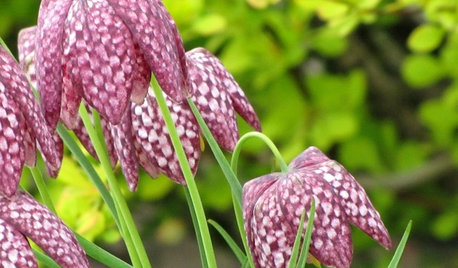What's the difference between variety and subspecies?
Martial
10 years ago
Featured Answer
Sort by:Oldest
Comments (9)
brandon7 TN_zone7
10 years agoRelated Professionals
Palm Springs Landscape Architects & Landscape Designers · Saint Louis Park Landscape Architects & Landscape Designers · Bowie Landscape Contractors · Clark Landscape Contractors · Fort Hunt Landscape Contractors · Laguna Hills Landscape Contractors · Lake Zurich Landscape Contractors · Metairie Landscape Contractors · Old Saybrook Landscape Contractors · Silver Firs Landscape Contractors · Charlotte Fence Contractors · Coram Fence Contractors · North Potomac Fence Contractors · San Pedro Fence Contractors · Voorhees Fence Contractorsbrandon7 TN_zone7
10 years agoMac Riyadh
7 years agobrandon7 TN_zone7
7 years agoparker25mv
7 years agolast modified: 7 years agoalbert_135 39.17°N 119.76°W 4695ft.
7 years agoJay 6a n.c. IL.
6 years agoalbert_135 39.17°N 119.76°W 4695ft.
6 years agolast modified: 6 years ago
Related Stories

GARDENING GUIDES6 New Plant Varieties That Beat Out Their Parents
With better resistance and fewer demands, these garden beauties are worth a spot on your wish list
Full Story
FALL GARDENING7 Delightfully Different Bulbs for Your Spring Garden
Fall planting: Stray from the standards for a more exotic spring garden that draws applause
Full Story
FURNITURE15 Couches That Dare to Be Different
Break free from beige with a couch designed to bring fiery color, fierce pattern or a surprising shape to your living room
Full Story
ROOTS OF STYLEArt Deco, Art Nouveau, Arts and Crafts: What’s the Difference?
If the zigzag and swirly designs of the past leave your head spinning, these descriptions will straighten you right out
Full Story
LIFEYou Said It: ‘It’s Different ... But Then, Aren’t You?’ and More Wisdom
Highlights from the week include celebrating individuality and cutting ourselves some decorating slack
Full Story
ARCHITECTUREModern or Contemporary: What's the Difference?
10 homes illustrate the essence of modern and contemporary home design styles
Full Story
REMODELING GUIDESCarrara vs. Calacatta Marble: What Is the Difference?
The answer is in the color and veining of these popular Italian marbles
Full Story
KITCHEN DESIGNKitchen of the Week: What a Difference Paint Can Make
A bold move gives a generic Portland kitchen personality without a major overhaul
Full Story
DECORATING GUIDESArchitectural Details Make All the Difference
Are you missing an opportunity to enhance your home with brackets, cabinet feet and moldings?
Full Story
DECORATING GUIDESStaging vs. Decorating: What's the Difference?
Unlike decorating, staging your home isn't about personal style — it's about creating ambiance and appeal for buyers
Full Story






ronalawn82